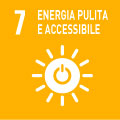- Docente: Alessandra Tolomelli
- Crediti formativi: 6
- SSD: CHIM/06
- Lingua di insegnamento: Inglese
- Moduli: Alessandra Tolomelli (Modulo 1) Emilio Tagliavini (Modulo 2) Claudio Trombini (Modulo 3)
- Modalità didattica: Lezioni in presenza (totalmente o parzialmente) (Modulo 1); Lezioni in presenza (totalmente o parzialmente) (Modulo 2); Lezioni in presenza (totalmente o parzialmente) (Modulo 3)
- Campus: Bologna
-
Corso:
Laurea Magistrale in
Chemical Innovation and Regulation (cod. 5701)
Valido anche per Laurea Magistrale in Chemical Innovation and Regulation (cod. 5701)
-
Orario delle lezioni (Modulo 1)
dal 20/03/2025 al 27/03/2025
-
Orario delle lezioni (Modulo 2)
dal 09/12/2024 al 12/12/2024
-
Orario delle lezioni (Modulo 3)
dal 24/03/2025 al 28/03/2025
Conoscenze e abilità da conseguire
At the end of the course the student will be aware that natural processes and natural products are sources of materials and inspiration for implementing green chemical production and products exploitation. Biocatalytic processes and green solvents will be chosen as examples of important tools to be applied in the development of new chemicals and in their production. The student is expected to be able to: 1. design synthetic routes to chemicla products that resembles metabolic pathways and exploit enzymes and fermentations; 2. design synthetic routes that exploit biomass-derived products as starting materials; 3. design chemical synthese and manipulations processes that exploit biomass-derived solvents as liquid media;
Contenuti
The UC consists of three modules, with the following contents:
(1) Sustainability of biocatalytic processes
Basic principles of biocatalysis: enzymatic structure, origin of activity and selectivity, kinetic models. Reaction efficiency and green chemistry metrics for biotransformations. Application of biocatalysis to sustainable industrial processes: industrial biocatalytic reactions of one and several stages. Examples of biocatalysis in industrial mass production. Cascading multi-enzymatic systems. Immobilization techniques of isolated enzymes and whole cells: advantages in the recovery of environmentally friendly products. Examples of biocatalytic processes supported in nanoscale devices and enzymatic biosensors.
(2) Renewable Sources
In this module the relationship between sustainable chemistry and renewable sources will be explored. The main components of biomasses will be presented, comparing the structure of fossil feedstock with that of renewable feedstock. Different types of pre-treatments applied to biomass to obtain chemical compounds, biopolymers and biofuels will be illustrated, introducing the main concepts of biorefinery and bio-platform chemicals, through various examples of existing biorefinery. Finally, the main biofuels (bioethanol, biodiesel, biogas and bio-hydrogen) and the “generations” of biofuels will be analyzed.
(3) Alternative Green Solvents
Solvents are used in almost all manufacturing processes in a wide variety of applications. Many of the products we use, that are vital to everyday modern living from pharmaceuticals and personal care to household products and electronics, are all manufactured using solvents in their processes. Solvents in products such as coatings, inks, and consumer products emit substances into the air known as Volatile Organic Compounds (VOCs). The emissions of VOCs in the atmosphere contribute to the formation of the tropospheric ozone. Solvents are a key priority when “greening” chemistry because they are used in high volume, and generate large amounts of waste, air pollution, and other health impacts. The analysis of alternatives to standardly used solvents is the goal of this module. Chemical reactivity hazards of the most common organic solvents are compared to the available green alternatives represented by water-based solvents, supercritical fluids, ionic liquids, etc. The abuse of “green labels” on the web, in advertisements, and in the literature is also critically analyzed. Selection guides for solvents will be proposed. Technical solutions for minimizing solvent use and recycling solvents will be discussed.
Testi/Bibliografia
Lecture notes will be available for students.
Additional bibliography:
J. A. Tao, R. Kazlauskas, “Biocatalysis For Green Chemistry And Chemical Process Development” John Wiley & Sons, Editor.
Renewables-based technology: sustainability assessment; J. Dewulf, H. Van Langenhove (Eds). John Wiley, 2006.
Green Chemistry for Environmental Remediation, R. Sanghi, V Singh Eds., Scrivener Publishing LLC., 2012
Metodi didattici
The course unit is divided in three modules. Each module is organized in theoretical classes where main concepts are explained, as well as tutorial classes with discussion of case-study examples.
Modalità di verifica e valutazione dell'apprendimento
Each module is assessed in a specific way that will be specified at the beguin of module’s classes. Assessment can be: a written assignment, a power point presentation or analogous a, including a report on literature research, a short written test or a review.
Link ad altre eventuali informazioni
Orario di ricevimento
Consulta il sito web di Alessandra Tolomelli
Consulta il sito web di Emilio Tagliavini
Consulta il sito web di Claudio Trombini
SDGs




L'insegnamento contribuisce al perseguimento degli Obiettivi di Sviluppo Sostenibile dell'Agenda 2030 dell'ONU.
